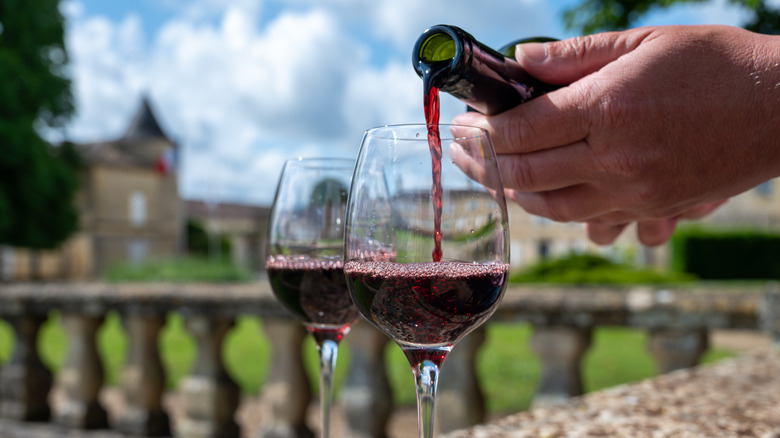Avoiding Sugary Wines? Here's What To Look Out For
The only thing dry during my January was my wine. If you have a similar taste as me and prefer dryer wines (or simply trying to limit your sugar intake), avoiding overly sugary wines will bode well.
Admittedly, it's difficult to determine the exact amount of sugar in wines, but there is a quick rule of thumb you can use. But first, it's important to delineate residual sugar from added sugar. During fermentation, yeast consumes sugar to produce alcohol. Residual sugar is the sugar present in wine after fermentation has stopped. Dryer wines (which are better for cooking) are typically fermented for longer, making them less sweet because more of the sugar has been converted.
Which means a tried-and-true way to assess how sugary a wine will be is by looking at the bottle's ABV. The ABV in normal drinking wine ranges anywhere from 5.5% to 15%. When a wine surpasses that 15% threshold, it's most likely because it's been fortified. So long as we aren't talking about fermented wine, a higher ABV suggests a lower sugar content.
Some winemakers, however, add sugar after the fermentation process. These tend to be low-quality, mass-market wines. Cheap doesn't necessarily equate to bad, but when it comes to mass-market wines, cheaper bottles are more likely to have added sugar.
Sweet doesn't always mean sugary
Unlike most red and white wines, sparkling wines have classifications based on the level of the sweetness printed right there on the label. Brut and extra brut wines are the driest, dry wine is the middle-ground, and doux wine (which translates to 'sweet' in French) refers to the sweetest sparkling wines.
Extra brut is dryer than brut, containing less than 6 grams of sugar per liter; while brut usually contains less than 12 grams. Dry sparkling can mean anything from 17 to 32 grams of sugar. And finally, doux champagnes contain 50 grams of sugar per liter or more.
If you aren't on the market for sparkling wine, detecting the amount of sugar in wine can be tricky business. That being said, some wines are easy to steer clear of if you're trying to avoid a high sugar content. Although high-quality dessert wines (such as a port) often only contain the residual sugar from the grapes, they're still high in sugar, hence their name.

